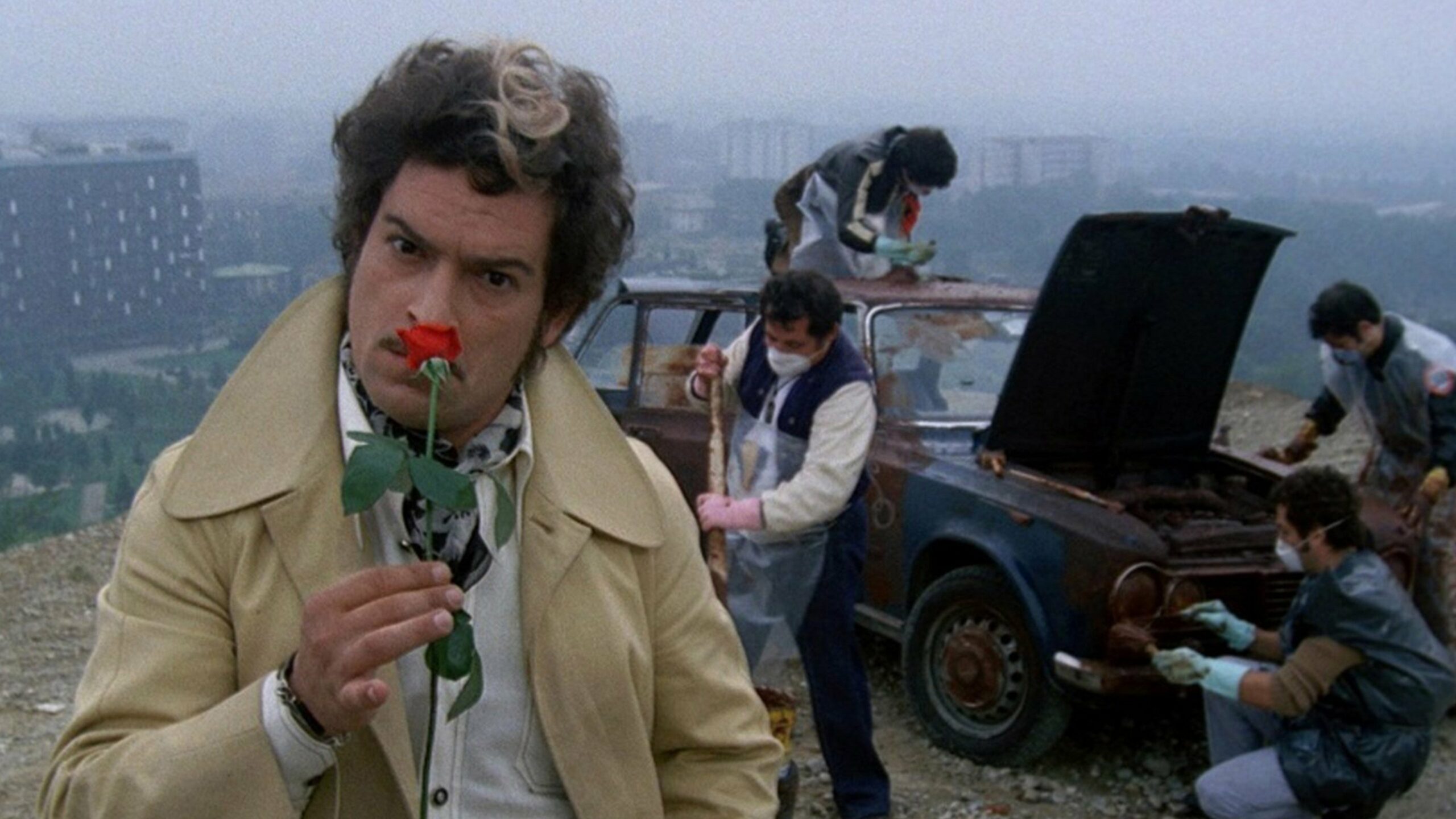Directed by Lina Wertmüller, Tutto a posto e niente in ordine is an Italian film that captures the vibrancy, struggles, and idealism of youth in 1970s Italy. Known for her unique cinematic voice and daring social critiques, Wertmüller uses this film to delve into the lives of young people in search of meaning. Grappling with personal and political transformation against the backdrop of a rapidly changing society.
The Story: A Search for Identity and Purpose
Tutto a posto e niente in ordine follows a group of young people from diverse backgrounds who come together in a communal living experiment in Rome. They share ambitions, resources, and ideals, but also face interpersonal conflicts, financial struggles, and their own internal contradictions. The film reflects the social and political landscape of 1970s Italy. A period marked by widespread calls for social justice, greater autonomy, and resistance to traditional structures. Wertmüller doesn’t shy away from presenting the flaws and naivete of her characters, capturing them with humor, compassion, and a sense of realism.
The central characters each embody different facets of the youth culture of the time, with personalities and beliefs that reflect the complex blend of disillusionment and hope of a generation yearning for change. As they interact and clash, Wertmüller reveals the limitations of their utopian visions while celebrating their energy and resilience.
Lina Wertmüller’s Direction: A Blend of Satire and Social Commentary
Wertmüller, celebrated for her keen social critique, brings a satirical yet empathetic approach to the characters and their struggles. Her style is energetic and often chaotic, mirroring the turbulent emotions and ideologies of her young protagonists. Through sharp dialogue, Wertmüller dissects the social issues of the day, from class conflict and gender dynamics to the idealism and disillusionment of youth.
The film’s title, Tutto a posto e niente in ordine, reflects Wertmüller’s characteristic irony. It suggests the organized chaos within the characters’ lives and aspirations—a sense that everything seems fine on the surface, but nothing is truly in order beneath it. Wertmüller’s direction brings a sense of immediacy to the story, using close-up shots, rapid pacing, and carefully orchestrated group scenes. All to emphasize the camaraderie and tension among the characters.
Themes of Rebellion and Social Change
The film explores themes of identity, rebellion, and the difficulty of effecting real change. Each character’s journey represents a different aspect of 1970s youth culture. Through these interactions, Wertmüller examines the challenges of communal life, the compromises that come with activism, and the friction between idealism and reality. Tutto a posto e niente in ordine also delves into the gender roles and social expectations that shaped the lives of young Italians. Presenting characters who both embrace and push against these constraints.
Wertmüller’s characters are flawed and human, driven by passion but often thwarted by their own insecurities and biases. The film presents a balanced critique of their idealism, showing how personal desires can conflict with collective goals, and how deeply entrenched societal structures resist transformation.
The Setting: A Glimpse into 1970s Rome
Rome itself serves as a vivid backdrop for the film, reflecting the broader political and social changes of Italy at the time. Wertmüller uses the urban landscape to highlight both the beauty and struggles of communal life. The bustling streets, crowded apartments, and communal spaces give the film an authentic atmosphere. Grounding the characters’ lofty ambitions in the reality of their everyday lives.
The city’s blend of ancient and modern serves as a metaphor for the characters’ conflicts, contrasting their youthful ambitions with the deep-rooted traditions they aim to challenge. The setting of Rome enhances the film’s authenticity. Making it both a time capsule of 1970s Italian life and a mirror for the universal struggle of youth to find meaning in a complex world.
Performances: A Dynamic Ensemble Cast
The ensemble cast brings authenticity to their roles, capturing the energy and contradictions of young people caught between idealism and practicality. The actors play off one another naturally, imbuing their characters with charisma and depth. Their performances range from earnest and passionate to humorous and self-aware, contributing to the film’s realistic portrayal of group dynamics and the excitement and frustrations of communal living.
The chemistry among the cast members adds to the film’s appeal, as the actors navigate the emotional highs and lows of youth with intensity and humor. Wertmüller’s ability to draw out these nuanced performances gives the film a lively, unpredictable quality, making the audience feel as though they are part of the characters’ world.
Legacy and Cultural Impact
Tutto a posto e niente in ordine remains an important film in Lina Wertmüller’s oeuvre and in Italian cinema. Thus showcasing her talent for blending humor with sharp social critique. The film captures the essence of a generation caught in the whirlwind of change, offering a realistic yet hopeful take on the complexities of idealism. Wertmüller’s work continues to resonate with audiences for its unapologetic exploration of human flaws. Its witty commentary on social issues, and its celebration of youth’s desire to redefine the world.
In addition to being a reflection on 1970s Italy, Tutto a posto e niente in ordine serves as a universal exploration of the difficulties faced by young people seeking identity and purpose. The film’s title, its blend of humor and realism, and its lively portrayal of youth make it a timeless piece. One that speaks to the frustrations, aspirations, and resilience of every generation striving to create a new order in a world that remains stubbornly “out of order.”
Watch the movie on Movieitaly+
Read more articles here!






